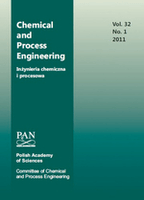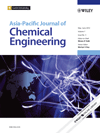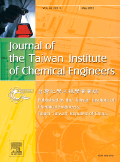
Chemical and Process Engineering-New Frontiers
Scope & Guideline
Exploring Novel Methodologies in Process Engineering
Introduction
Aims and Scopes
- Bioprocess Engineering:
Research on bioprocesses, including fermentation, metabolic pathways, and the development of bioreactors, is a pivotal focus. This includes studies on microbial metabolism, enzyme activity, and the application of bioproducts. - Sustainable Chemical Processes:
The journal emphasizes sustainable practices in chemical engineering, such as waste treatment, biofuels, and the circular economy, promoting eco-friendly technologies and methods. - Materials Science and Engineering:
Investigations into new materials, including hydrogels, nanomaterials, and catalysts, are key aspects. This includes their synthesis, characterization, and application in various fields such as biocatalysis and environmental remediation. - Process Optimization and Modelling:
The journal regularly publishes studies on the optimization of chemical processes through mathematical modelling, data-driven approaches, and experimental validation, enhancing efficiency and performance. - Environmental Engineering:
Research dedicated to pollution control, including the degradation of pollutants and the development of advanced filtration and treatment technologies, is a significant area of focus.
Trending and Emerging
- Bioremediation and Waste Valorization:
Research on the use of biological processes to remediate contaminated environments and valorize waste materials is gaining traction, emphasizing sustainable practices and resource recovery. - Advanced Extraction and Separation Techniques:
Emerging methodologies such as microwave-assisted extraction and foam fractionation are becoming prominent, showcasing innovative approaches to enhance the efficiency and effectiveness of separation processes. - Digital Twins and Data-Driven Models:
The integration of digital twins and sophisticated data-driven models in process engineering is on the rise, indicating a shift towards simulation and predictive analytics to optimize processes. - Nanotechnology and Functional Materials:
The development and application of nanomaterials and advanced functional materials in various processes, including catalysis and drug delivery, are increasingly featured, reflecting a trend towards miniaturization and enhanced performance. - IoT and Smart Process Engineering:
The use of Internet of Things (IoT) technologies for monitoring and optimizing chemical processes is emerging as a significant theme, highlighting the intersection of chemical engineering and digital technology.
Declining or Waning
- Traditional Chemical Synthesis:
There has been a noticeable decrease in studies focused solely on traditional synthetic methods. As new technologies and greener alternatives emerge, interest in conventional synthesis processes is diminishing. - Basic Thermodynamics and Fluid Mechanics:
Research primarily centered on fundamental thermodynamics and fluid mechanics appears to be declining as the field moves towards more application-oriented and interdisciplinary approaches. - Classical Separation Techniques:
While separation processes remain crucial, there is a waning interest in classical techniques in favor of novel methods such as membrane technologies and advanced extraction processes.
Similar Journals

INDUSTRIAL & ENGINEERING CHEMISTRY RESEARCH
Shaping the Future of Industrial and Engineering ChemistryINDUSTRIAL & ENGINEERING CHEMISTRY RESEARCH, published by the American Chemical Society, is a pivotal journal that disseminates high-quality research in the fields of Chemical Engineering, Chemistry, and Industrial and Manufacturing Engineering. With an impressive impact factor, this journal ranks in the top quartile (Q1) across multiple categories, reflecting its significance and influence within the scientific community. Since its inception in 1987, IECR has provided a platform for researchers, professionals, and students to publish innovative findings that advance the understanding and application of engineering chemistry. Though it operates under a subscription model, the journal continues to foster collaboration within the field, inviting contributions that span theoretical advancements, experimental studies, and practical applications. Whether you are engaged in academia or industry, IECR serves as a vital resource for staying abreast of the latest developments in chemical and engineering research.

Green Chemical Engineering
Pioneering research at the intersection of chemistry and ecology.Green Chemical Engineering, an esteemed journal published by KEAI PUBLISHING LTD, plays a pivotal role in advancing the field of sustainable chemical engineering. With an Open Access policy since 2020, this journal facilitates the free exchange of cutting-edge research and innovations that address critical environmental challenges. Based in China, it has rapidly gained recognition with impressive category quartiles, ranking Q1 in numerous relevant fields including Catalysis, Chemical Engineering (miscellaneous), Filtration and Separation, and Process Chemistry and Technology. Its presence in Scopus highlights its significance, with top rankings (e.g., Rank #4/19 in Filtration and Separation) placing it in the upper echelons of chemical engineering literature. Designed for researchers, professionals, and students alike, Green Chemical Engineering aims to foster a collaborative platform for the dissemination of pioneering work that contributes to a greener and more sustainable future.

Asia-Pacific Journal of Chemical Engineering
Innovating the Future of Chemical Engineering in the Asia-Pacific.The Asia-Pacific Journal of Chemical Engineering, published by WILEY, serves as a vital forum for the dissemination of innovative research in the interdisciplinary domains of chemical engineering, renewable energy, sustainability, and waste management. Established in 2006, this esteemed journal has achieved a notable impact factor that reflects its commitment to advancing knowledge and practices within the chemical engineering community. With its Q3 category rankings across various fields, including Chemical Engineering (Miscellaneous), Renewable Energy, Sustainability and the Environment, and Waste Management and Disposal, the journal holds a significant position among its peers, assuring readers of quality and relevance in published content. Although it does not offer Open Access options, the Asia-Pacific Journal of Chemical Engineering remains an essential resource for researchers, professionals, and students aiming to stay at the forefront of innovations affecting the Asia-Pacific region and beyond. The journal's broad scope covers diverse topics, making it an integral part of the academic landscape from 2006 to 2024.

PERIODICA POLYTECHNICA-CHEMICAL ENGINEERING
Bridging Theory and Practice in Chemical EngineeringPERIODICA POLYTECHNICA-CHEMICAL ENGINEERING is a distinguished journal published by the Budapest University of Technology and Economics, focusing on the diverse field of chemical engineering. Established in 1968 and transitioning to Open Access since 1999, this journal provides a vital platform for sharing cutting-edge research and innovations in chemical engineering and related disciplines. With an HIndex that reflects its growing influence and categorized in the Q3 Quartile for Chemical Engineering (miscellaneous) in 2023, PERIODICA POLYTECHNICA aims to facilitate the dissemination of knowledge among researchers, professionals, and students alike. The journal's Scopus rankings in Environmental Science, General Chemistry, Materials Science, and Biochemistry showcase its multidisciplinary approach, making it an essential resource for anyone engaged in advancing their expertise in chemical engineering and the broader scientific community. Located in Hungary, PERIODICA POLYTECHNICA continues to contribute to the academic dialogue and inspire innovative solutions to contemporary challenges.

Engineering Review
Exploring practical applications for a sustainable future.Engineering Review is a prominent academic journal published by the University of Rijeka, Faculty of Engineering in Croatia. As an emerging outlet in the field of engineering, the journal has been providing a platform for interdisciplinary research since its inception in 2011, with a commitment to disseminating high-quality studies up to the horizon of 2024. Although currently categorized as Q4 in the Engineering (miscellaneous) section and ranking 242 out of 307 in General Engineering per Scopus metrics, the journal aims to bolster its impact and reach within the engineering community. With a focus on innovative approaches and practical applications in various engineering disciplines, Engineering Review invites contributions from researchers, professionals, and students alike, fostering a collaborative environment for the advancement of engineering research in a global context. While it is not an open-access journal at this time, it remains a vital resource for those engaged in cutting-edge engineering endeavors.

Journal of the Taiwan Institute of Chemical Engineers
Exploring the frontiers of chemistry and engineering.The Journal of the Taiwan Institute of Chemical Engineers is a prestigious publication in the field of chemical engineering and chemistry, published by Elsevier. With an impressive impact factor placing it in the top quartiles (Q1) of both the Chemical Engineering (miscellaneous) and Chemistry (miscellaneous) categories, this journal serves as a vital platform for disseminating cutting-edge research and innovative findings. Since its inception in 2009 and continuing through 2024, it has established a strong reputation with notable Scopus rankings—ranked 40th out of 273 in General Chemical Engineering and 62nd out of 408 in General Chemistry, reflecting the journal’s significance in its field. By offering open access options, the journal ensures that research is readily available to a global audience, fostering collaboration and knowledge exchange among researchers, professionals, and students. The Journal of the Taiwan Institute of Chemical Engineers is dedicated to advancing the discipline of chemical engineering and supporting the development of novel scientific methodologies and applications.

CHEMICAL AND BIOCHEMICAL ENGINEERING QUARTERLY
Fostering Collaboration in Chemical Engineering ExcellenceCHEMICAL AND BIOCHEMICAL ENGINEERING QUARTERLY, published by the Croatian Society of Chemical Engineering Technology, is a distinguished open-access journal that has been providing a platform for the dissemination of innovative research since its inception in 1987. With a focus on the fields of biochemistry and chemical engineering, this quarterly journal addresses a wide array of topics, including process chemistry and technology, making significant contributions to both academia and industry. Despite its current positioning in the Q4 category for biochemistry and Q3 for miscellaneous chemistry and process chemistry in 2023, the journal continues to strive for greater impact, catering to researchers, professionals, and students alike. Its open-access model, in place since 2001, ensures that cutting-edge research is accessible to a broad audience, fostering collaboration and knowledge sharing within the scientific community. By promoting high-quality research and providing insights into the latest advancements, Chemical and Biochemical Engineering Quarterly remains an essential resource for those involved in the chemical and biochemical engineering disciplines.

Reaction Chemistry & Engineering
Advancing the Frontiers of Chemical EngineeringReaction Chemistry & Engineering is an esteemed journal published by the Royal Society of Chemistry, dedicated to advancing the field of chemical engineering. With a focus on pivotal topics including catalysis, process technology, and fluid flow, this journal serves as a critical platform for researchers and professionals seeking to disseminate innovative findings and methodologies. As of 2023, it boasts impressive impact factors, ranking Q2 in Catalysis and consistently appearing in the Q1 categories for several related fields, thus recognizing its influence and relevance in the scientific community. With Scopus rankings placing it among the top 30 journals in multiple chemical engineering categories, Reaction Chemistry & Engineering encourages open dialogue and collaboration among scientists aiming to overcome contemporary challenges in chemical processes. This journal is vital for anyone involved in the development and application of chemical engineering, providing essential insights and fostering progress in this dynamic discipline. Explore the latest research and contribute to future innovations by engaging with the cutting-edge work presented in Reaction Chemistry & Engineering.

International Journal of Chemical Engineering
Connecting researchers to shape the future of chemistry.International Journal of Chemical Engineering is a leading peer-reviewed journal published by HINDAWI LTD, dedicated to advancing the field of chemical engineering through innovative research and practical applications. With an impact factor that places it in the Q2 category of Chemical Engineering (miscellaneous), this journal has established itself as a significant resource for researchers and professionals alike, particularly those interested in general chemical engineering topics. Since its transition to Open Access in 2008, the journal has ensured that critical scientific knowledge remains accessible to a global audience, fostering collaboration and interdisciplinary research. With coverage from 2009 to 2024, it continues to be an essential platform for disseminating cutting-edge findings, methodologies, and discussions that shape the future of chemical engineering. For more information, visit their website or access the latest issue directly to explore groundbreaking studies and insights.

Frontiers in Chemical Engineering
Catalyzing Knowledge for Tomorrow's ChallengesFrontiers in Chemical Engineering is an esteemed open-access journal published by Frontiers Media SA, dedicated to advancing knowledge in the dynamic field of chemical engineering. Since its inception in 2019, this journal has rapidly gained recognition for its rigorous peer-reviewed articles and innovative research contributions, achieving notable quartile rankings such as Q2 in Chemical Engineering and Q3 in both Bioengineering and Catalysis by 2023. With an emphasis on providing accessible and cutting-edge research, the journal caters to a diverse audience of researchers, professionals, and students interested in the latest developments and methodologies within the chemical engineering discipline. Hailing from Lausanne, Switzerland, Frontiers in Chemical Engineering embodies a commitment to enhancing collaborative scientific communication, making crucial research findings available without barrier. By publishing high-quality articles that address both theoretical advancements and practical applications in chemical engineering, this journal serves as a pivotal resource for fostering innovation and collaboration across the global research community.